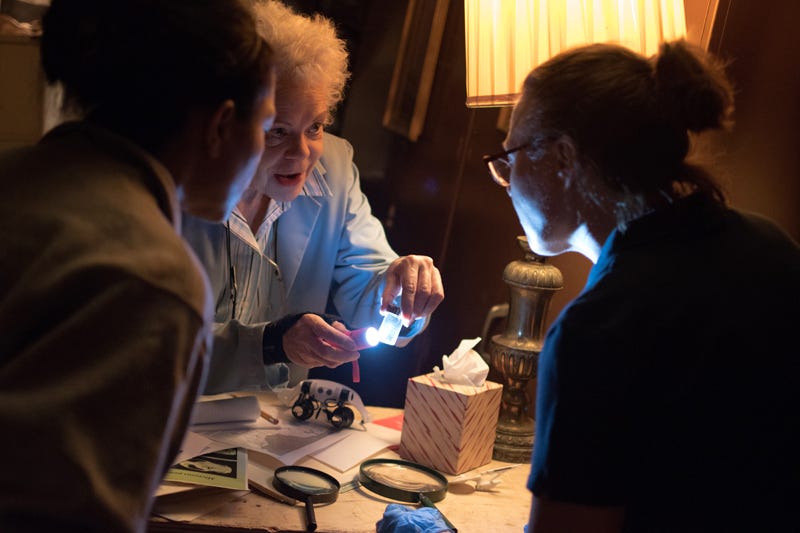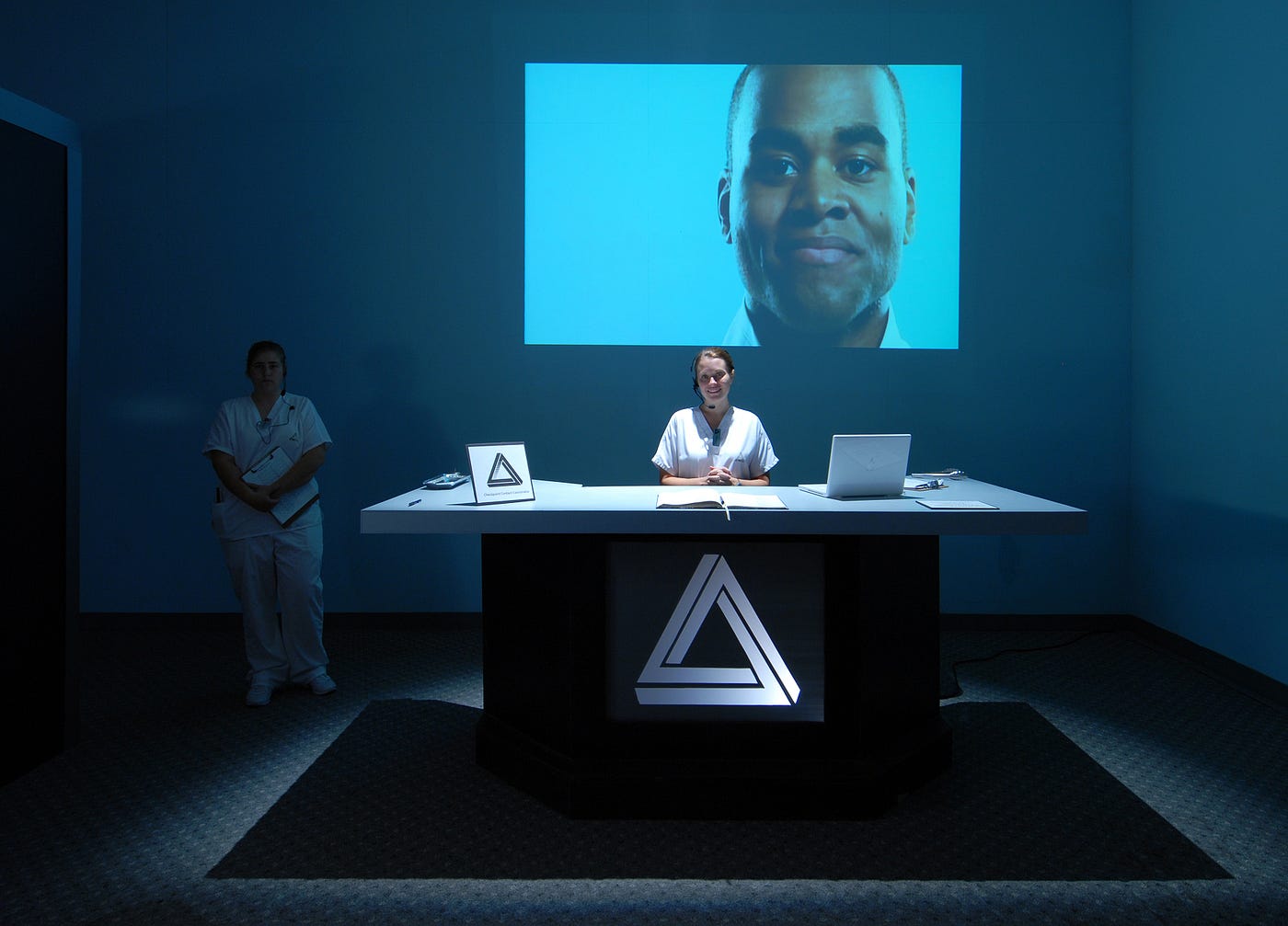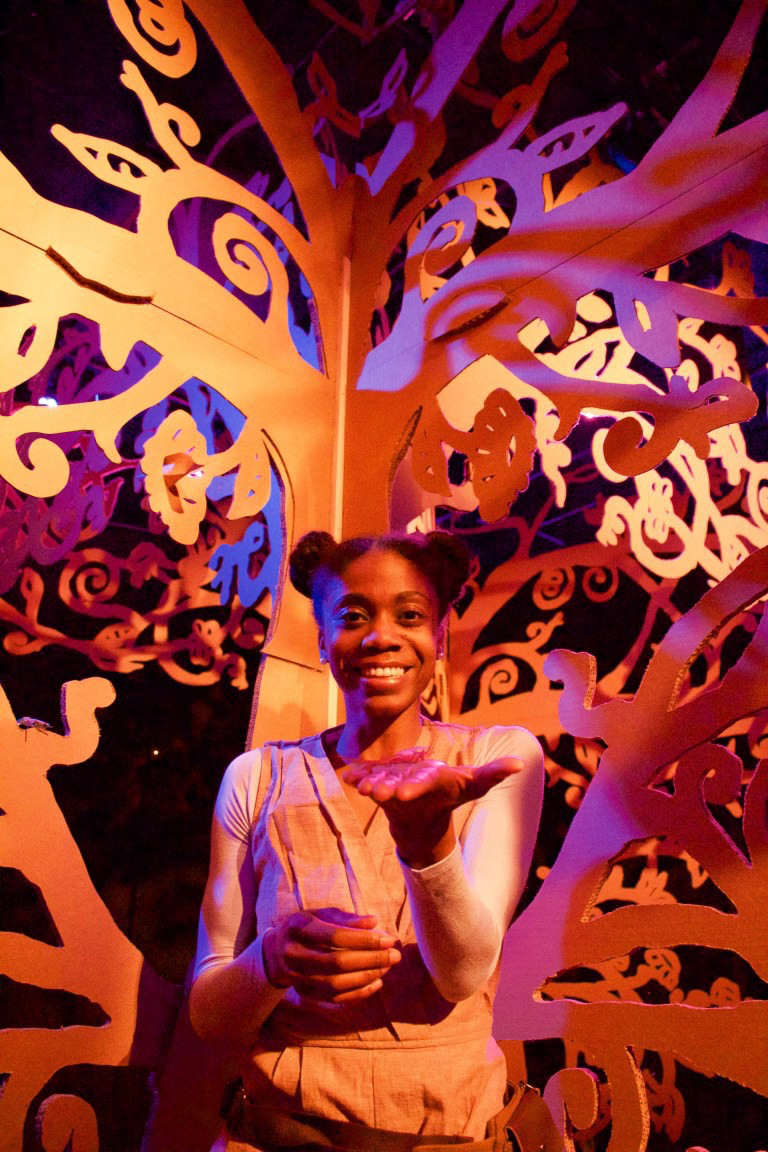
An interview with two of immersive theatre’s most influential creators
If you’re interested in experimental theatre and anywhere near the Eastern seaboard, you may have heard the name Bricolage, the Pittsburgh-based theatre company, mentioned before.
If that doesn’t ring a bell, perhaps you’ve heard of some of their large-scale works: STRATA (where attendees found themselves in a “refitnessing center” in search of self-help); OjO (where participants were blindfolded at a mock travel agency and then taken on a gudied sensory journey); or DODO (a show staged inside a museum space last fall, exploring how modern audiences interact with cultural institutions). Bricolage has been creating ambitious immersive works over the last several years, with an increasing emphasis on diversity and inclusion. The company is currently readying their latest production—The Forest of Everywhere, a show designed with children with Autism Spectrum Disorder and their families in mind.
We caught up with Bricolage’s Artistic Director Jeffrey Carpenter and Producing Artistic Director Tami Dixon and asked them our Immersive 5.
This interview has been lightly edited for clarity.

No Proscenium (NP): What does “immersive” mean to you?
Jeffrey Carpenter (JC): While there are many schools of thought on the subject, Bricolage defines immersive theatre as a theatrical event that places audience members at the center of the experience. For us, immersive theatre fundamentally alters the traditional audience-performance relationship by giving you more agency. Instead of sitting in a seat, watching a story unfold on a stage, you are moving through an interactive environment, engaging in the story as it unfolds around you.
Each of our immersive productions incorporates intimate and personalized moments and blurs the line between artist and audience/fiction and reality/past and present. Each is drastically different from the next. You may be in a group of several people exploring city buildings and curious alleyways in an urban adventure like OjO: The Next Generation of Travel, or you may be completely alone on an individual journey of the senses, like in our Immersive Encounters.
Tami Dixon (TD): The Forest of Everywhere takes kids out of their seats and into a real-life adventure. They’ll explore an open-world environment, have one-on-one interactions, and play without the restrictions and rules of traditional theater. Sitting is not a requirement. Being quiet for long periods of time is not a requirement. By building the show with the Autistic community in mind, the creative team focused not on how to make children better fit into the show, but how to make a show that better fits all types of children. The result is an environment that allows all children to be themselves, without fear of judgment or restriction.

NP: Why (or why don’t) you think of your work as immersive?
JC: “Immersive” for us is defined by work that casts the individual audience member within the narrative. Each audience member (which we term ‘participant’) must, explicitly or implicitly, understand who they are in any given moment or environment, and ultimately comprehend who they are in the piece as a whole. This will ultimately instruct what decisions they are to make and when. Instead of a “voyeur” experience that places the audience-goer outside of the narrative, unfolding without their involvement, we put the audience member at the center of the story. Participation is not only encouraged, but paramount to the completion of the experience.
TD: And for The Forest of Everywhere, for example, the kids are explorers who have arrived to help our characters feel at home in their new surroundings.
NP: What was the moment where you knew that this kind of work was for you?
JC: From the beginning we’ve been obsessed with finding ways to create a heightened sense of involvement for our audience, and ways of challenging the traditional relationship between artist and audience. We’ve always wanted more from this exchange. Being an observer wasn’t enough. We wanted to involve them in the process, the result, and story.
When I worked with Enrique Vargas and Teatro de los Sentidos out of Barcelona on the U.S. premiere of Echo of the Shadow, that work began to crystalize and inform all our creative direction. In Echo of the Shadow, audience members were individual “travelers” embarking on a journey through a series of dream-like chambers in search of their shadow, which they had lost, ultimately a metaphor for our deeper unconscious selves.
Get Kathryn Yu’s stories in your inbox
Join Medium for free to get updates from this writer.
SubscribeSubscribe
After that experience, nothing at Bricolage would ever be the same.

NP: When designing — regarding your approach to presence, agency, safety, and consent — how do you cue the audience as to what’s expected of them and the nature of the content they might encounter?
JC: It really comes down to establishing trust and as each experience differs in content, tone, place and physical demands, it often depends on qualifying the individual participant’s needs, expectations, and abilities, prior to their arrival.
Some of our ‘frequent flyers’ don’t want to know anything, they want to be surprised, and they say “yes” immediately. Newer participants, who are unsure, and possibly suspicious, need a bit more incentive. We try to be as transparent as possible with our participants without giving away any secrets. In general, we are not interested in scaring them, but rather challenging them to be in the present moment and accept the offers we put forth. We provide 80% of the material and we rely on the participants to supply the rest. Their level of engagement will reflect their experience.
Physical safety is always our number one priority and we go to great lengths to secure it. Emotional and psychological safety varies with the piece as well as the individual. Agency allows for participants to choose and can vary with each piece and sometimes within each room. It could be a prescribed test, or a choice about what they want to do, and where they are willing to go. At any time a participant can opt out through use of a “safe word.”

Accessibility and inclusion have become a larger priority. Because of this we have built an Immersive Companion Program to open our doors wider to people who might not traditionally be included in immersive experiences.
TD: The Forest of Everywhere was built with accessibility and inclusion in mind from the very beginning. Through an extended workshop process, the piece resulted in an open-world, embodied experience designed for and with Autistic people. This sensory-sensitive space combines puppet characters who communicate in non-traditional ways. We have a non-speaking bunny who harnesses touch, and utilizes olfactory, texture, objects, light and shadows to make connections. We have a donkey who is more kinetic than verbal, and we have an ostrich who sings and rhymes most of her conversations.
The entire space was designed to accommodate anyone who uses a mobility device and we have ASL interpreters and audio describers on hand to support participants who are deaf or visually impaired.
NP: What works — be they creative works, books, or other inspirations — have shaped your current work?
JC/TD: We draw inspiration for each project from a myriad of sources, whether relational, environmental or thematically depending on the content and the overall intent, and where our research leads us.
Initial inspiration for the direction of our work in general can be attributed to the following (among others):
Companies:
Teatro de los Sentidos
Rimini Protokoll
Odyssey Works
Punchdrunk
Oily Cart
Video Games:
Portal by Valve Corporation
Books:
Invisible Cities by Italo Calvino
Remainder by Tom McCarthy
Films:
The Game (1997), David Fincher
Synecdoche, New York (2008), Charlie Kaufman
The Forest of Everywhere runs May 17 — June 3 in Pittsburgh; tickets are $12 and the first chaperone is free. All children must be accompanied by an adult.
View all of our Immersive 5 Interviews.
No Proscenium is a labor of love made possible by our generous Patreon backers: join them today!
In addition to the No Proscenium web site, our podcast, and our newsletters, you can find NoPro on Twitter, Facebook, YouTube, Instagram, in our Facebook community Everything Immersive, and on our Slack forum.




















Discussion